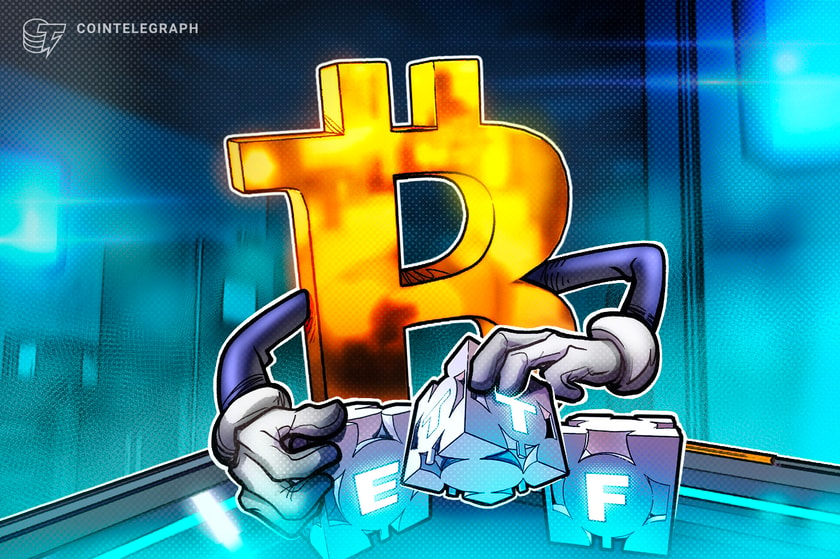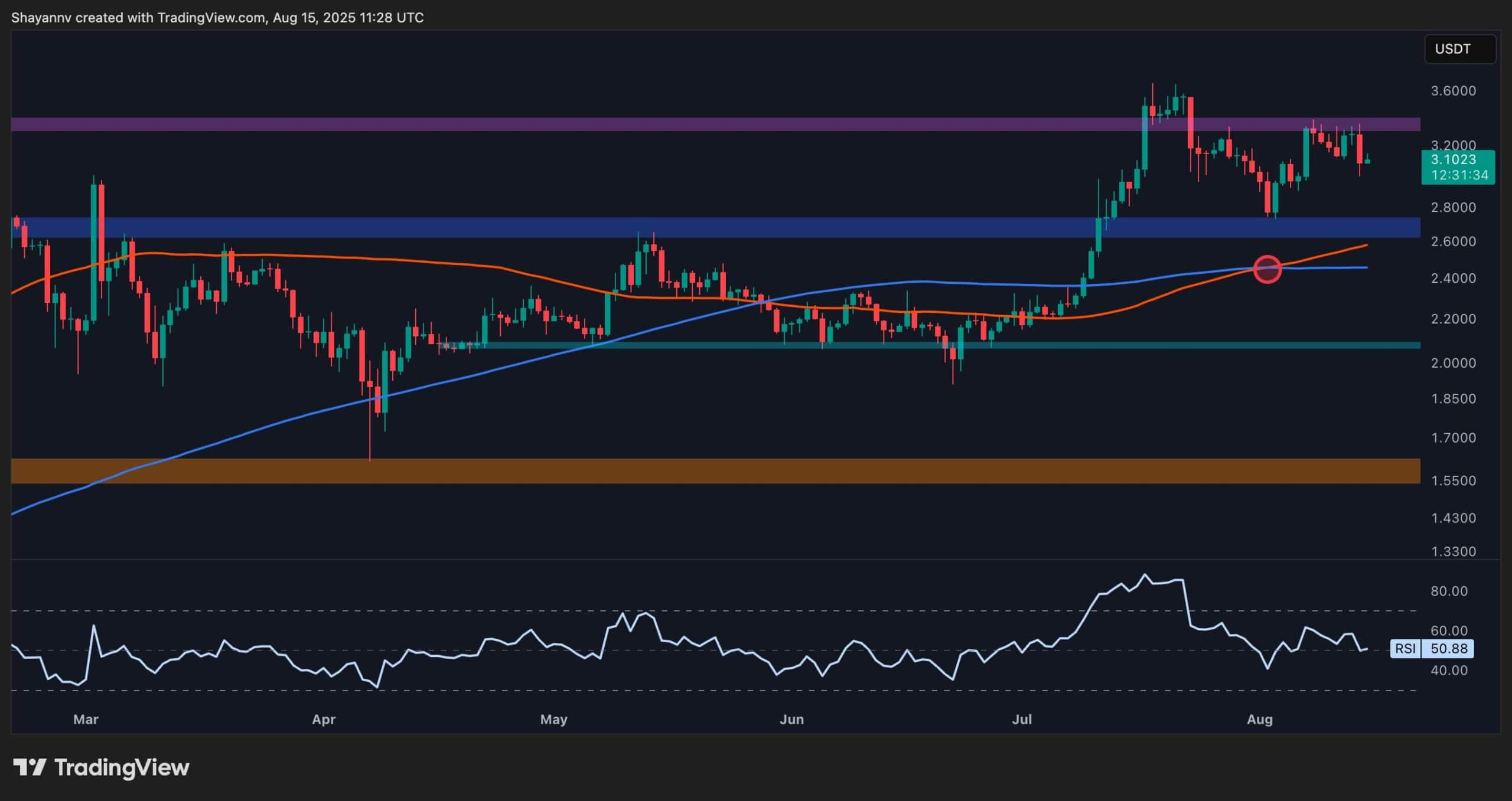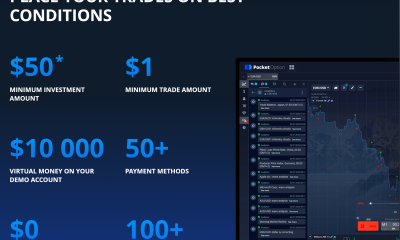Cryptocurrency
ETF filings changed the Bitcoin narrative overnight — Ledger CEO

Over the past 12 months, some investors learned the hard way why they needed to move their crypto offline. Those who kept Bitcoin (BTC) and altcoins on crypto exchanges like FTX lost control of their assets, sometimes forever. Events drew a red line under the storied crypto adage: “Not your keys, not your coins.”
FTX’s loss was hardware wallet manufacturer Ledger’s gain, however. The Bahamas-based exchange’s November 2022 bankruptcy filing delivered to Ledger “our biggest sales day ever,” the firm’s chief experience officer, Ian Rogers, told Cointelegraph, and “November turned out to be our biggest sales month on record.”
Paris-based Ledger has been on a strong growth curve recently, though the past year has not been without controversy. In May, for instance, the firm drew industry ire when it launched a new secret recovery phrase storage service called Ledger Recover. Still, it remains one of the best-known and most-used crypto wallet makers in the world.
Cointelegraph recently caught up with Rogers and Ledger CEO Pascal Gauthier in New York City to discuss the new crypto climate in the United States, the latest trends in crypto storage and differences in doing business in the U.S. and Europe, among other topics.
Cointelegraph: Many think that the crypto/blockchain sector is still in the doldrums or moving sideways at best, but you see reasons to be cheerful even here in the U.S.?
Pascal Gauthier: What happened in 2023 — and went virtually unnoticed — is a change of tone regarding Bitcoin. When the SEC [Securities and Exchange Commission] implied that Bitcoin was a utility and/or commodity — and not a security [like other altcoins] — this triggered two things: large companies like BlackRock began their ETF [exchange-traded fund] application process, and then the media narrative around Bitcoin changed almost overnight.
As 2023 began, Bitcoin was for drug dealers, terrorists, bad for the planet, etc. — and suddenly it became completely kosher. The biggest financial institutions in the U.S. are suddenly doing Bitcoin.
CT: The BlackRock application for a spot-market Bitcoin ETF was a turning point?
PG: Big money is coming into crypto; it’s been announced. It may take a few years to really finally arrive, but if you look at Fidelity, BlackRock, Vanguard…
CT: What about U.S. regulations? Aren’t they still a barrier?
PG: The next administration will decide the fate of crypto in the United States. If Biden stays in power, this administration could continue to be aggressive toward crypto. If it’s someone else, we’ll see what happens.
CT: Let’s talk about offline storage devices. Mark Cuban said in 2022 that crypto wallets were “awful.” Did he have a point?
PG: A lot of our early customers used our [cold wallet] product to “buy and hold.” You would purchase a Ledger [device], you put your Bitcoin in it, and then you put it someplace and forget about it. But that’s not what we recommend now.
Recent: AI a powerful tool for devs to change gaming, says former Google gaming head
Today, you can connect your wallet to Web3 and use your private keys to do many things, including buying, selling, swapping and staking crypto, as well as engaging with DApps [decentralized applications] and even declaring your taxes.
CT: On a 1 to 10 scale, where would you put cold wallets today in terms of user experience (UX)?
PG: For the industry, it’s a three. For Ledger, maybe a four — and we’re striving to be a 10. The industry has a lot to do in terms of UX and UI [user interface].
Ian Rogers: Your hardware-software combo today is not just about hardware and software. It’s an end-to-end experience.
When you’re buying an Apple iPhone, for instance, you’re not buying a piece of hardware; you’re buying into the Apple experience. We would ultimately like that to be the same thing with Ledger. Our approach is to do the absolute best user experience possible without compromising on security or self-custody.
CT: Still, there’s these UX issues like the 24 seed words you need to recover your private key if you lose your Ledger device. Some users go to great lengths to safeguard those words, even engraving them in steel just in case their house burns down. Doesn’t that sound sort of extreme?
PG: It is a little backwards to have something like a metal plate in your home. It’s not very 21st century. But we came up with a solution for this.

When you use a Ledger product, you end up with your Ledger device and a PIN code. And you will also have those 24 words that become your master password, basically. You need to keep those 24 words safe, and this is a major barrier to entry for a lot of people. They don’t trust themselves with those 24 words. They don’t trust themselves not to lose them.
So, we came up with a service called Ledger Recover [i.e., an optional paid subscription service provided by Coincover that is expected to launch in October] to deal with that. It allows you to shard your private key into three encrypted shards and then send them to three different custodians. They cannot do anything with the [single] encrypted shard. Only you can bring your 24 words together again if necessary.
CT: Don’t we already have something like that with “social recovery,” where you entrust your cold wallet recovery to several friends or “guardians?”
PG: Social recovery doesn’t really work. We’ve done something that resembles social recovery — but with businesses [i.e., Ledger, Coincover and EscrowTech]. You will have to present your ID if you want to initiate the shard recovery.
CT: You were criticized when you first announced the Ledger Recover service in May. Then, the launch was postponed amid the “backlash.” There were security concerns. People said these three shard-holding companies could reconstruct your private key.
PG: There is still a lot of education to be done for people to understand really how security works. People said [at that time] that it might be a good product if it were more transparent and easier to adopt. So we didn’t go live in May, as planned, in order to make the product ‘open source,’ which adds something in terms of transparency though not security,
CT: But couldn’t three sub-custodial companies, at least in theory, collaborate and reconstruct your privacy key?
PG: It’s not possible. They don’t have the necessary tools necessary to decrypt and reconstruct.
CT: Moving on to Ledger’s business model, do you sometimes worry that as big institutions like Fidelity Investments or banks like BNY Mellon enter the crypto space that users may simply park their crypto with them? If they get hacked, those giant custodial institutions will then make them whole again. Or at least that is sometimes the thinking.
PG: We’re a pure technology company. So when Fidelity decides to become a [retail] crypto custodian, they’ll probably come to us and buy a part of our technology to build their own technology stack.
CT: Your business strides several continents. You’re based in France, but you sell many of your devices in the United States. You have first-hand experience of those two business climates — the U.S. and Europe. Are there key differences when it comes to crypto?
PG: Europe has a tendency to over-regulate or regulate too fast, generally speaking. Sometimes people say, well, you know, Europe has clarity because it has MiCA [Markets in Crypto-Assets, the EU’s new crypto legislation], while in the U.S., there is a lack of clarity and lots of lawsuits.
But in the U.S., the way that the law is designed is slow and bumpy. It takes time to change laws in the U.S., but when change finally does come, it’s often for the better.
Magazine: 6 Questions for JW Verret — the blockchain professor who’s tracking the money
If you look at the biggest tech champions in the world, they’re mostly American or Chinese. Zero are European.
CT: Are you linking heavy regulation with a lack of innovation?
PG: It’s hard to say if they are directly linked, but Europe has always had a heavy hand in terms of taxation and regulation.
Ian Rogers: To me, there’s no question they are linked. At LVMH [the French luxury goods conglomerate where Rogers served as chief digital officer for five years], we worked with a lot of startups. Every European startup wanted to get to the U.S. or China to “get scale” before they came back to Europe. Europe is not a good market if you’re a startup.
CT: But Ledger remains positive about the future of cryptocurrencies and blockchain technology overall?
PG: Things are not necessarily what they seem to be. It was our [late] French president François Mitterrand, who said: “Give time for time.” There’s something going on now, and only the future will be able to make clear what is happening.
Cryptocurrency
Ethereum Foundation, Whales, and Hackers: What’s Driving the ETH Sell-Off?

TL;DR
- Whales, hackers, and the Ethereum Foundation wallets moved over $500M in ETH through large sales and withdrawals.
- Ethereum transfers rose to 4.6M ETH, nearing the monthly high of 5.2M recorded in July.
- Staking inflows hit 247,900 ETH, the highest in a month, locking more supply from trading.
Large Withdrawals and Whale Activity
Ethereum (ETH) has seen heavy movement from major wallets over the past few days. On-chain data from Lookonchain shows a newly created wallet pulled 17,591 ETH, worth $81.62 million, from Kraken in just two hours.
Over three days, two new wallets withdrew a combined 71,025 ETH, valued at $330 million, from the exchange.
One of these wallets, address 0x2A92, has withdrawn 53,434 ETH, worth $242.34 million, in two days. This includes a recent purchase of 30,069 ETH, valued at $138.46 million, during a market drop.
Major ETH Holders Offload Millions Amid Price Rally
In contrast, several separate entities have been disposing of some ETH holdings. A wallet tied to a hacker address 0x17E0 sold 4,958 ETH for $22.13 million at $4,463, securing a profit of $9.75 million. Earlier this year, the same address sold 12,282 ETH at $1,932 and later bought back part of the amount at higher prices.
A different whale sold 20,600 ETH for $96.55 million over the past two days, generating a profit of more than $26 million after holding the position for nine months.
Meanwhile, an Ethereum Foundation-linked wallet, 0xF39d, sold 6,194 ETH worth $28.36 million in the last three days at an average price of $4,578.
Recent sales from the same wallet included an additional 1,100 ETH and 1,695 ETH for over $12.7 million combined.
The #EthereumFoundation-linked wallet(0xF39d) sold another 1,300 $ETH($5.87M) at $4,518 ~11 hours ago.
Over the past 3 days, this wallet has sold a total of 6,194 $ETH($28.36M) at an average price of $4,578.https://t.co/4hfCWymHVG pic.twitter.com/ErUyEY8SJy
— Lookonchain (@lookonchain) August 15, 2025
Network Activity on the Rise
CryptoQuant data shows Ethereum’s total tokens transferred have been climbing since August 9. After ranging between 1 million and 3 million ETH through late July and early August, transfers have risen to 4.6 million ETH, approaching the monthly high of 5.2 million recorded in mid-July. This increase has occurred alongside a price rally from about $3,400 to $4,600.
Interestingly, staking inflows generally stayed between 20,000 and 80,000 ETH per day over the past month. On August 14, inflows jumped to 247,900 ETH, the highest in the period.
At the time, ETH was trading near $4,600. Large staking deposits reduce the amount of ETH available for immediate trading, as staked coins are locked for a set period.
In the meantime, ETH trades at $4,647 with a 24-hour volume of $68.25 billion, down 2% on the day but up 19% over the week.
Binance Free $600 (CryptoPotato Exclusive): Use this link to register a new account and receive $600 exclusive welcome offer on Binance (full details).
LIMITED OFFER for CryptoPotato readers at Bybit: Use this link to register and open a $500 FREE position on any coin!
Cryptocurrency
Massive DOGE Whale Activity Hints at $1 Breakout

TL;DR
- Whales bought two billion DOGE this week, lifting their combined holdings to 27.6 billion coins.
- A single 900M DOGE transfer worth $208M to Binance drew attention to large exchange movements.
- DOGE broke key resistance, with momentum building for a possible push toward the $1 price mark.
Price and Market Moves
Dogecoin (DOGE) traded at $0.23 at press time, slipping 4% over the past day but still showing a 2% gain for the week. Daily turnover came in at about $6.18 billion.
Meanwhile, the broader crypto market saw over $1 billion in liquidations. Hotter-than-expected US Producer Price Index data pushed traders to scale back expectations of a near-term Federal Reserve rate cut. DOGE had roughly 290,500 coins liquidated during the sell-off.
On the two-week chart, analyst Trader Tardigrade notes that DOGE has cleared a downward-sloping resistance line after completing what appears to be a “wave V” in an Elliott Wave sequence. Similar setups in the past, where prolonged declines stayed within falling channels before breaking higher, have been followed by sharp rallies.
$Doge/2-week#Dogecoin is gaining strong momentum to surge above $1 pic.twitter.com/TuSEKr19nv
— Trader Tardigrade (@TATrader_Alan) August 15, 2025
Momentum gauges are also turning up. The Stochastic RSI, which had dropped into oversold territory, is now heading higher. Previous reversals from this zone have coincided with sustained upward moves. The current formation points to a possible run that could carry DOGE past the $1 mark.
Heavy Whale Buying and Large Transfers
As reported by CryptoPotato, blockchain data shows large investors have added two billion DOGE in the past week, spending just under $500 million. That brings their holdings to about 27.6 billion coins, or 18% of the supply. The buying streak has prompted speculation within the community.
Recently, Whale Alert flagged a 900 million DOGE transfer worth about $208 million into Binance. The tracking indicates that it originated from a wallet connected to the exchange, likely as an internal activity. The address involved holds 2.88 billion DOGE, one of the largest balances on the network.
Ali Martinez also reports that transactions above $1 million reached a one-month high, with activity building since early August and peaking as DOGE traded at $0.25.
Whales are back! Dogecoin $DOGE activity at a 1-month high. pic.twitter.com/C83Pv68mCt
— Ali (@ali_charts) August 14, 2025
Sentiment Building
Analyst Gordon described the current setup as “a nice bit of consolidation” before a potential breakout, adding,
“This will be one of the first coins normies FLOCK to & the pump will be MASSIVE.”
With whale accumulation rising, high-value transfers increasing, and a bullish technical pattern in play, DOGE is positioned for a potential push toward $1 if momentum holds.
Binance Free $600 (CryptoPotato Exclusive): Use this link to register a new account and receive $600 exclusive welcome offer on Binance (full details).
LIMITED OFFER for CryptoPotato readers at Bybit: Use this link to register and open a $500 FREE position on any coin!
Cryptocurrency
Ripple Price Analysis: XRP at Risk as Key Support Levels Could Trigger Sharp Drop

XRP has recently entered a consolidation phase after a strong rally earlier this summer, with the price action now hovering around key resistance levels on both its USDT and BTC pairs. Yet, while momentum has slowed, the charts still indicate a generally bullish structure, with multiple key support levels remaining firmly in place.
Technical Analysis
By ShayanMarkets
The USDT Pair
On the XRP/USDT daily chart, the price is currently trading near the $3.10 mark, facing a strong resistance zone around $3.40. This follows a breakout above the $2.70 range in July, which has now flipped into a support area.
Both the 100-day and 200-day moving averages are also trending upward and recently formed a bullish crossover around $2.45, reinforcing the medium-term bullish sentiment. If the $3.40 resistance breaks, a push toward the critical $4.00 range becomes likely.
However, the RSI hovering near the neutral 50 level suggests a lack of strong momentum for now, meaning a short-term pullback into the $2.80 support zone is still possible.
This zone will be key for maintaining the bullish structure. Losing it could open the door for a deeper correction toward the 200-day moving average located around the $2.40 mark. Yet, as long as the price stays above the moving averages, the broader trend remains bullish.
The BTC Pair
Looking at the XRP/BTC chart, the pair has recently pulled back after hitting the 3,000 SAT resistance, with the price currently around 2,600 SAT.
This follows a clean breakout above the long-term descending channel and a successful retest of its upper boundary, which coincided with the 200-day moving average and the 2,400 SAT support zone. This confluence remains a key bullish technical factor, as holding above it could attract renewed buying pressure.
That said, RSI levels around 48 show that momentum has cooled after the sharp July rally, meaning XRP may continue ranging between 2,400 SAT and 3,000 SAT in the near term. A decisive close above 3,000 SAT would likely open the path to the 3,400 SAT zone, while losing 2,400 SAT could shift the bias back toward 2,000 SAT support. For now, the structure still favors the bulls as long as higher lows remain intact.
Binance Free $600 (CryptoPotato Exclusive): Use this link to register a new account and receive $600 exclusive welcome offer on Binance (full details).
LIMITED OFFER for CryptoPotato readers at Bybit: Use this link to register and open a $500 FREE position on any coin!
Disclaimer: Information found on CryptoPotato is those of writers quoted. It does not represent the opinions of CryptoPotato on whether to buy, sell, or hold any investments. You are advised to conduct your own research before making any investment decisions. Use provided information at your own risk. See Disclaimer for more information.
Cryptocurrency charts by TradingView.

 Forex3 years ago
Forex3 years agoForex Today: the dollar is gaining strength amid gloomy sentiment at the start of the Fed’s week

 Forex3 years ago
Forex3 years agoUnbiased review of Pocket Option broker

 Forex3 years ago
Forex3 years agoDollar to pound sterling exchange rate today: Pound plummeted to its lowest since 1985

 Forex3 years ago
Forex3 years agoHow is the Australian dollar doing today?

 Cryptocurrency3 years ago
Cryptocurrency3 years agoWhat happened in the crypto market – current events today

 World3 years ago
World3 years agoWhy are modern video games an art form?

 Commodities3 years ago
Commodities3 years agoCopper continues to fall in price on expectations of lower demand in China

 Economy3 years ago
Economy3 years agoCrude oil tankers double in price due to EU anti-Russian sanctions





















